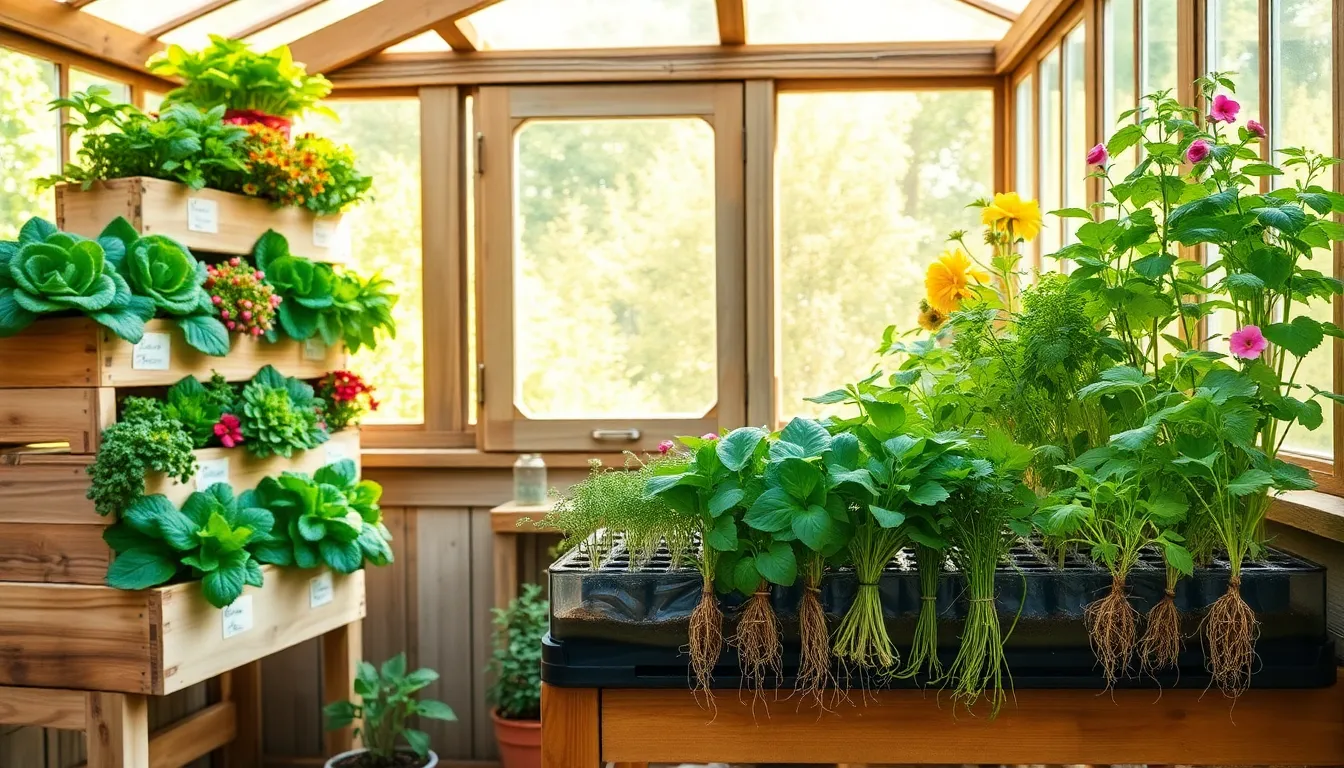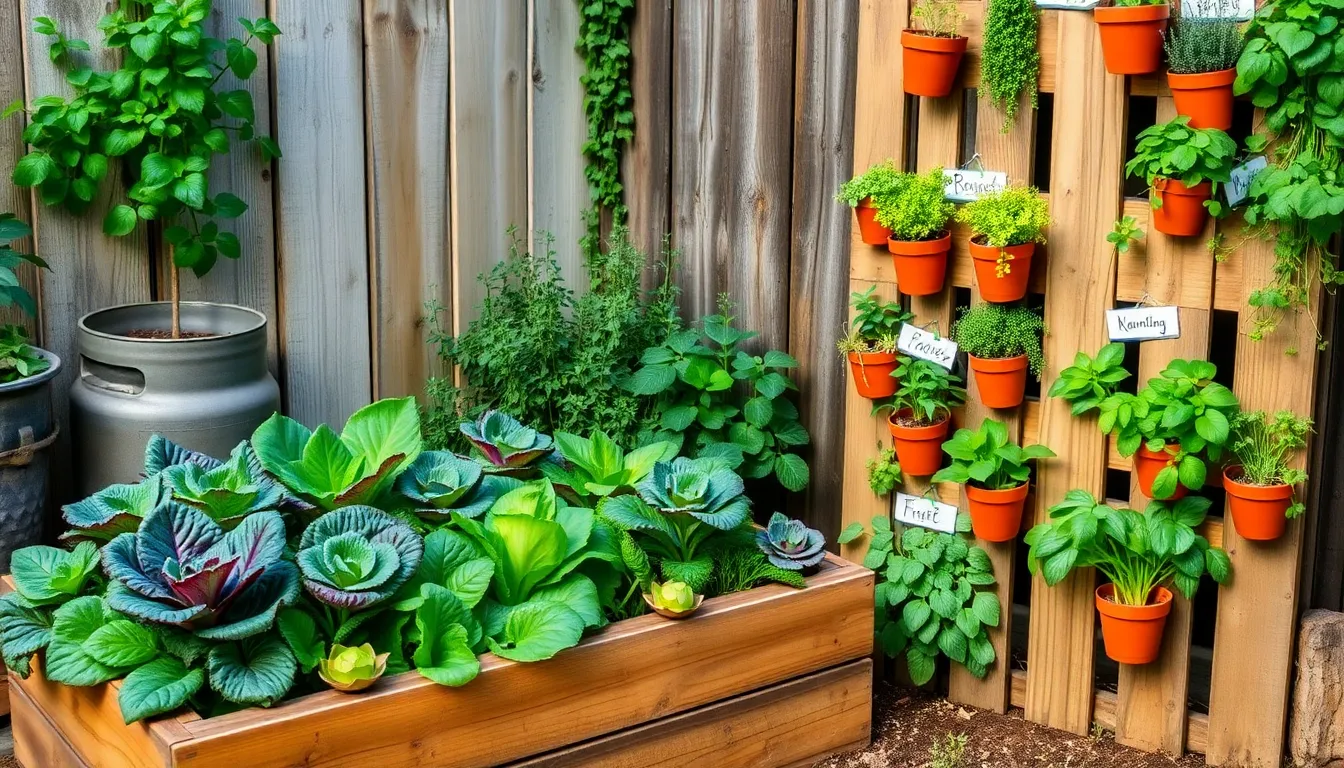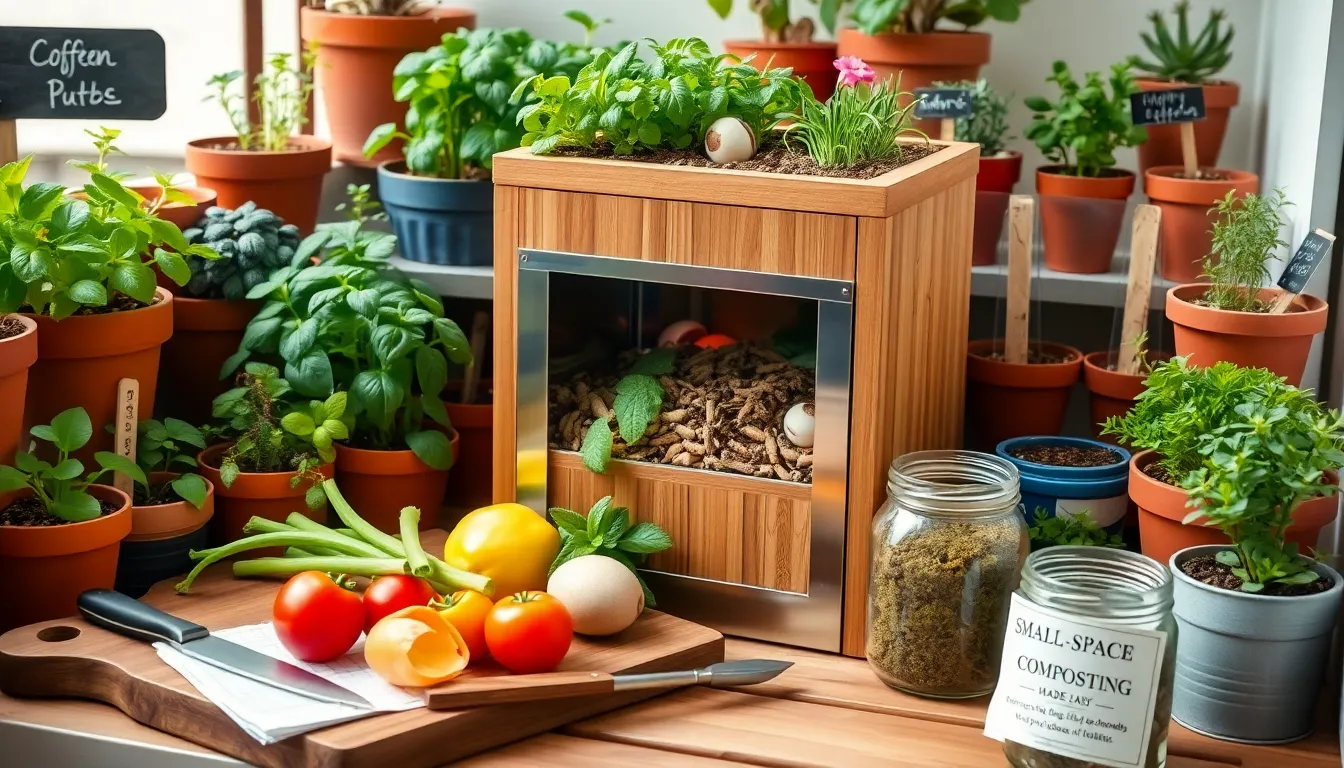Imagine stepping into your own backyard greenhouse, where the air is rich with the scent of thriving plants, and the promise of fresh produce is just a touch away. Whether you’re a seasoned gardener looking to expand your eco-friendly practices or a novice eager to embrace the joys of homegrown goodness, organic greenhouse projects offer a rewarding path to sustainability and self-reliance.
Incorporating organic principles into your greenhouse endeavors not only fosters a healthy ecosystem but also ensures that your plants flourish without the need for synthetic chemicals. Our guide, “14 Organic Backyard Greenhouse Projects,” is designed to empower you, providing both practical steps and creative ideas to transform your greenhouse into a haven of natural abundance.
You’ll discover how to maximize space, utilize natural resources, and implement eco-conscious techniques that cater to both common and exotic plants. From choosing the right materials to mastering organic pest control, each project is tailored to inspire confidence and cultivate success, whether you’re nurturing a single tomato plant or cultivating a diverse array of edible treasures.
Choosing the Perfect Greenhouse Type
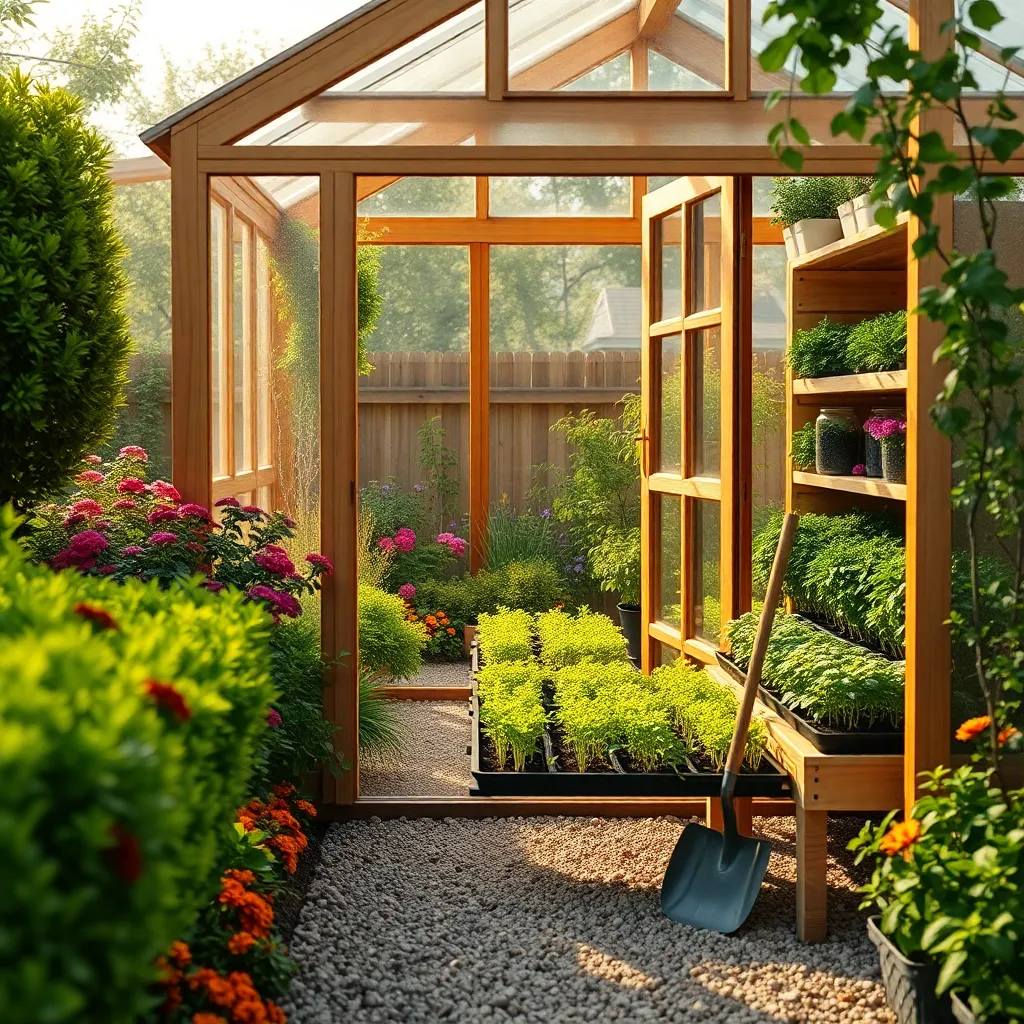
Deciding on the perfect greenhouse type for your backyard can significantly enhance your gardening success. Consider the available space, your climate, and the specific needs of the plants you wish to grow when choosing between a traditional glass greenhouse, a polycarbonate structure, or a simple hoop house.
For those in colder climates, a greenhouse with double-layered polycarbonate panels offers excellent insulation, helping to maintain a stable temperature. These panels diffuse sunlight evenly, reducing the risk of burning young seedlings while still providing ample light for photosynthesis.
In regions with milder winters, a hoop house might be a cost-effective option that extends your growing season without the need for heating. Ensure you select a sturdy frame and quality UV-resistant plastic to withstand wind and weather fluctuations.
Regardless of the structure you choose, proper ventilation is crucial to prevent overheating and to maintain healthy air circulation. Install adjustable vents or use roll-up sides to regulate temperature and humidity levels inside your greenhouse effectively.
Sustainable Materials for Construction
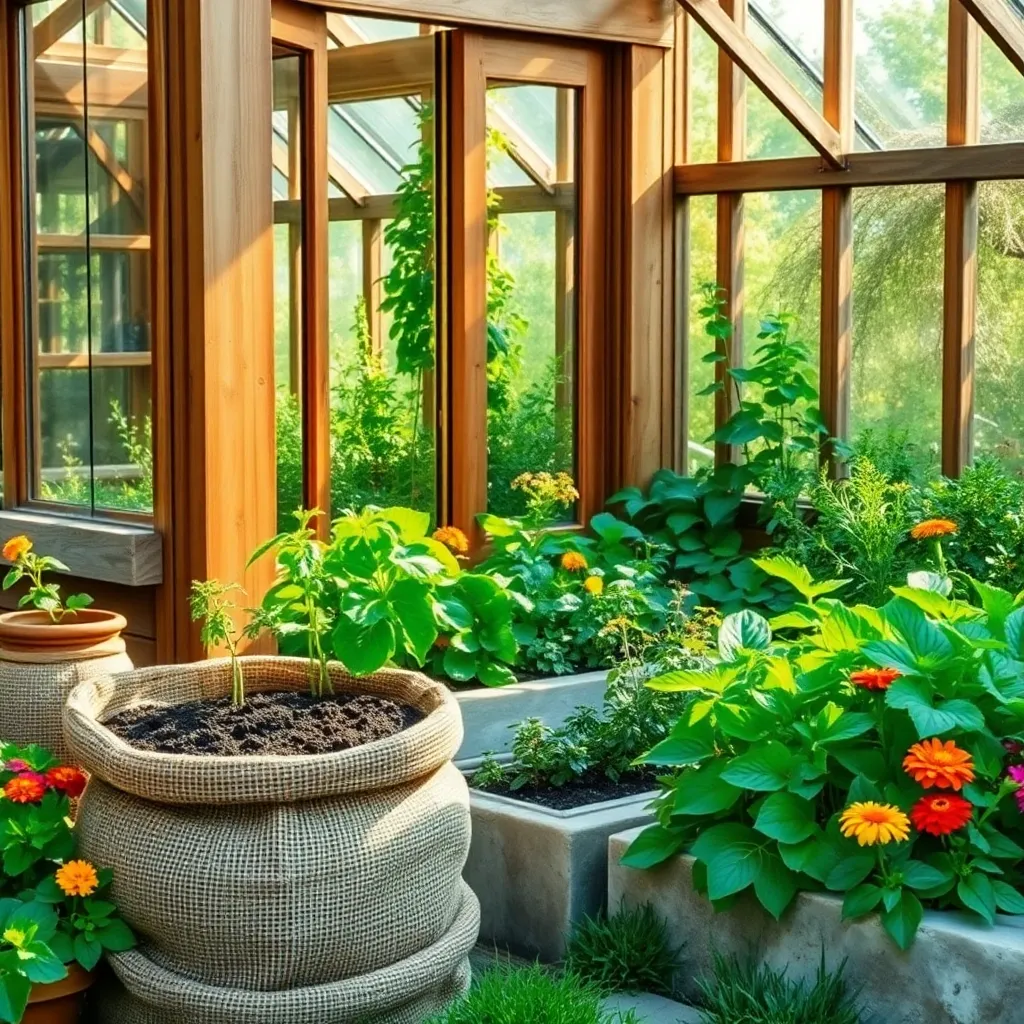
When constructing an organic backyard greenhouse, it’s important to select sustainable materials that not only support your plants but also minimize environmental impact. Reclaimed wood is an excellent choice, offering durability and a rustic aesthetic while reducing the demand for new lumber.
Consider using recycled glass for your greenhouse windows, which provides excellent insulation and allows ample sunlight for your plants. This choice not only reduces waste but also enhances the thermal efficiency of your greenhouse, keeping it warm even in cooler months.
Bamboo is another sustainable material worth considering for your greenhouse structure. It’s a rapidly renewable resource that is both strong and flexible, making it ideal for creating sturdy frames or trellises to support climbing plants.
For flooring, repurposed bricks or stone can offer a durable and aesthetically pleasing base while promoting excellent drainage. By using these materials, you can create a pathway that enhances the look of your greenhouse and prevents water accumulation, which can damage plant roots.
Maximizing Natural Sunlight Exposure
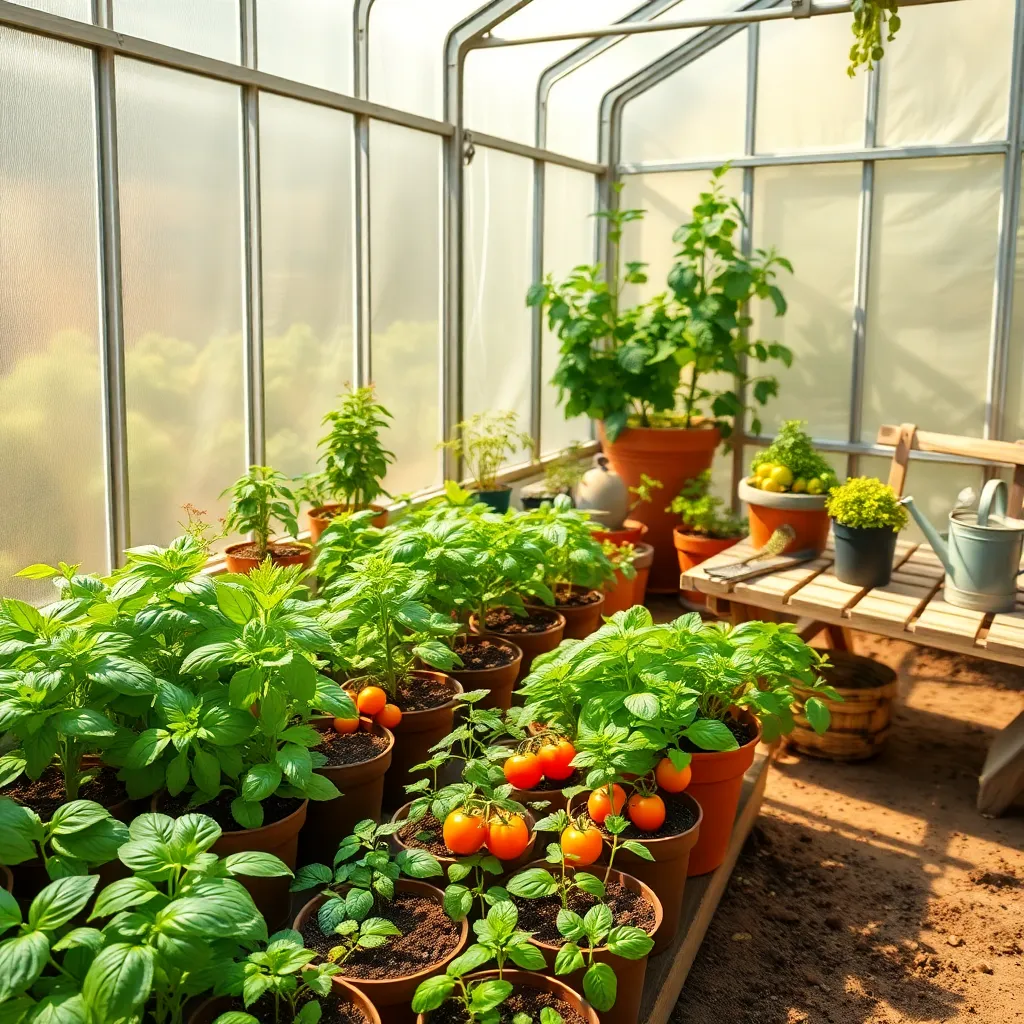
To make the most of natural sunlight in your greenhouse, position it where it will receive maximum exposure throughout the day. Generally, placing your greenhouse with its long side facing south ensures optimal light penetration, which is crucial for plant health.
Consider the impact of nearby structures and trees, as they can cast shadows and reduce light availability. If obstructions are unavoidable, select shade-tolerant plants or use reflective materials inside the greenhouse to enhance light distribution.
Regular cleaning of your greenhouse panels is essential to maintaining high light levels, as dirt and algae can significantly diminish sunlight transmission. A simple solution of water and mild soap can keep the panels clear without causing damage to the material.
For advanced gardeners, installing adjustable shading systems can help manage light intensity during peak sunlight hours, preventing overheating. This technique is particularly beneficial in summer, ensuring your plants remain healthy and thrive even in the hottest months.
Installing Efficient Ventilation Systems
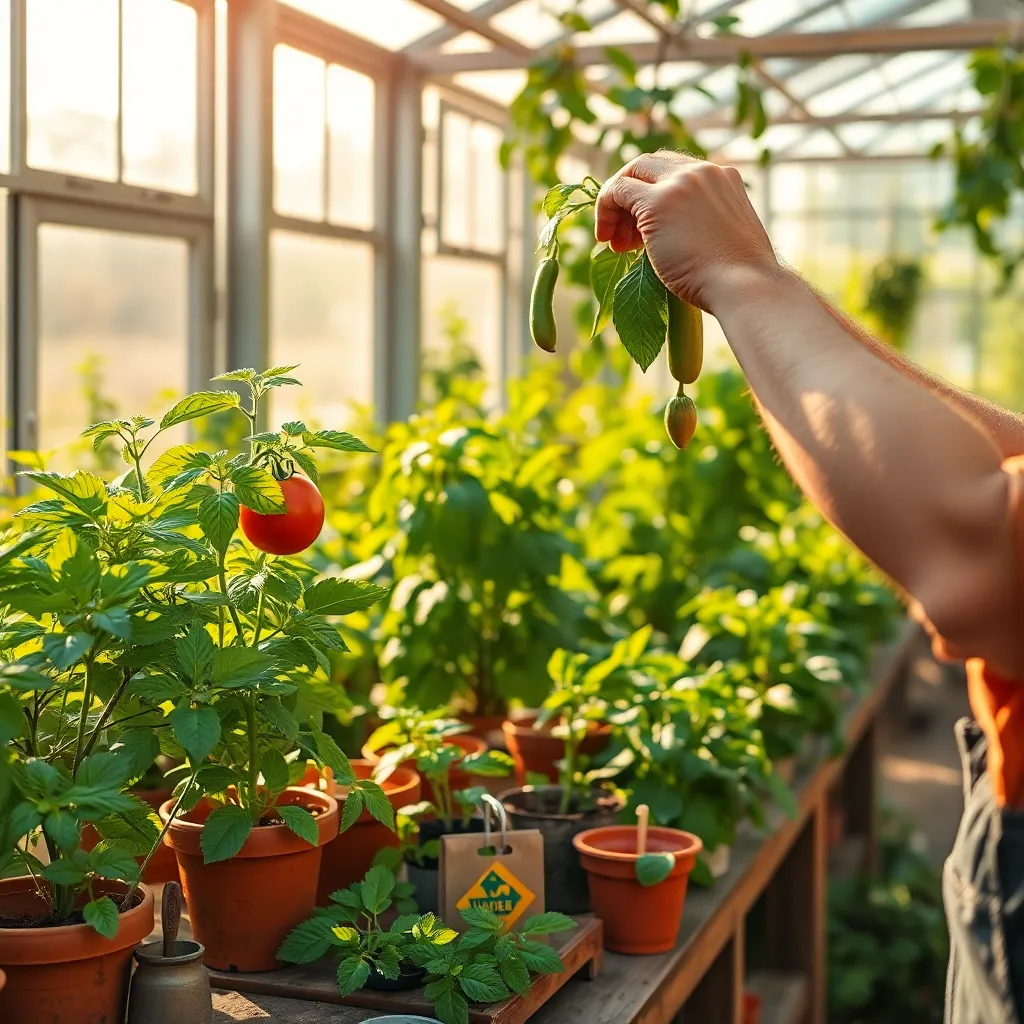
Creating an efficient ventilation system in your greenhouse is crucial for maintaining optimal growing conditions. By regulating temperature and humidity, proper ventilation helps prevent fungal diseases and allows your plants to thrive.
Start by assessing the size and layout of your greenhouse to determine the best placement for vents. Position roof vents at the highest point to allow hot air to escape, and consider adding side vents for cross ventilation.
For beginners, installing a basic manual vent system can be an effective and budget-friendly option. Simply open and close vents as needed based on the temperature and humidity levels inside your greenhouse.
More advanced gardeners might opt for an automated ventilation system, which can be set to open and close vents automatically based on environmental sensors. This ensures a consistent climate without the need for constant manual adjustment, making it ideal for those who may not be able to tend to their greenhouse daily.
Eco-Friendly Heating Solutions
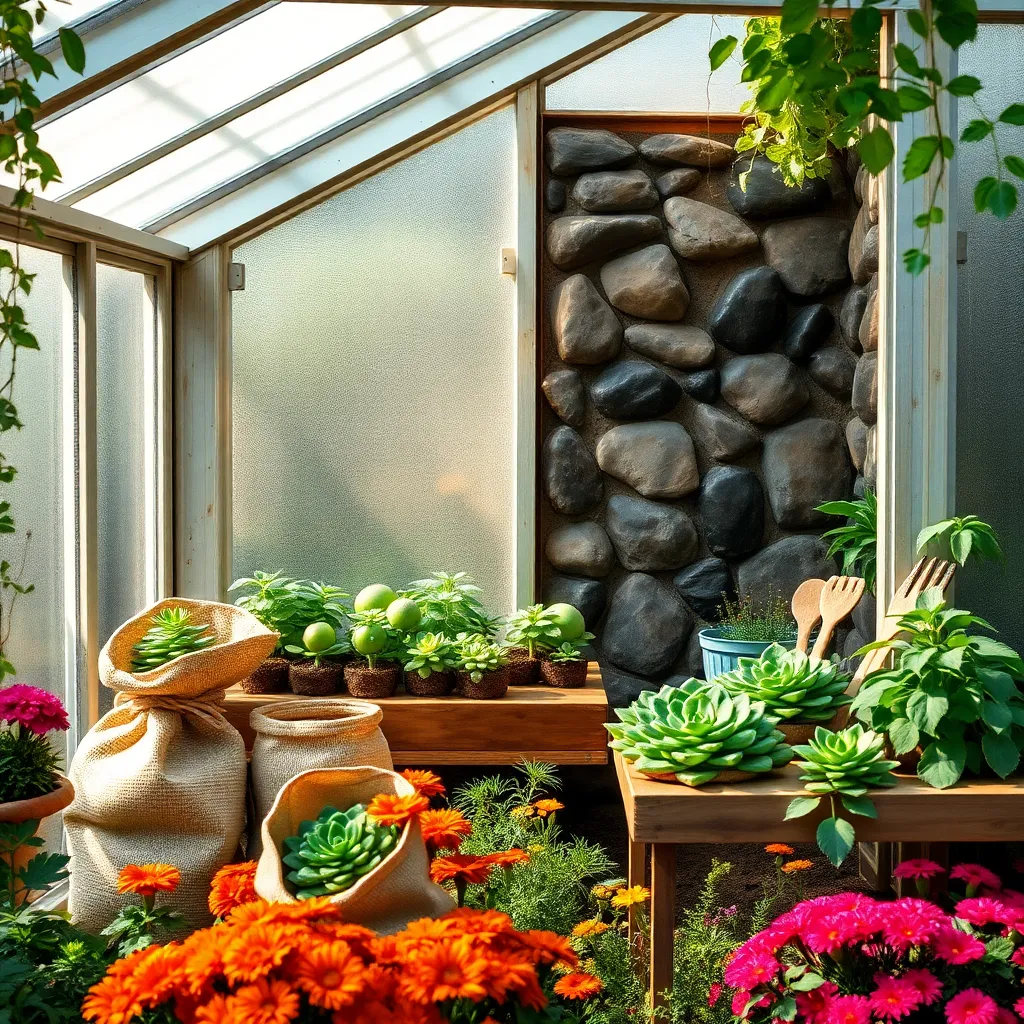
When it comes to eco-friendly heating solutions for your greenhouse, passive solar heating is an excellent option. By using materials such as stone, brick, or water barrels as thermal mass, you can effectively store heat during the day and release it during colder nights.
Another innovative solution is to incorporate a geothermal heating system. This involves burying pipes underground to leverage the constant temperatures below the frost line, providing a stable source of warmth for your greenhouse.
For those looking for a simpler approach, consider using compost piles as a natural heat source. Positioning a compost heap inside or adjacent to your greenhouse can provide a steady supply of warmth as the organic material breaks down.
To maximize efficiency, always ensure your greenhouse is well-insulated. Use materials like bubble wrap or thermal screens to retain the heat generated by these eco-friendly systems, reducing the need for additional heating.
Water Conservation Techniques
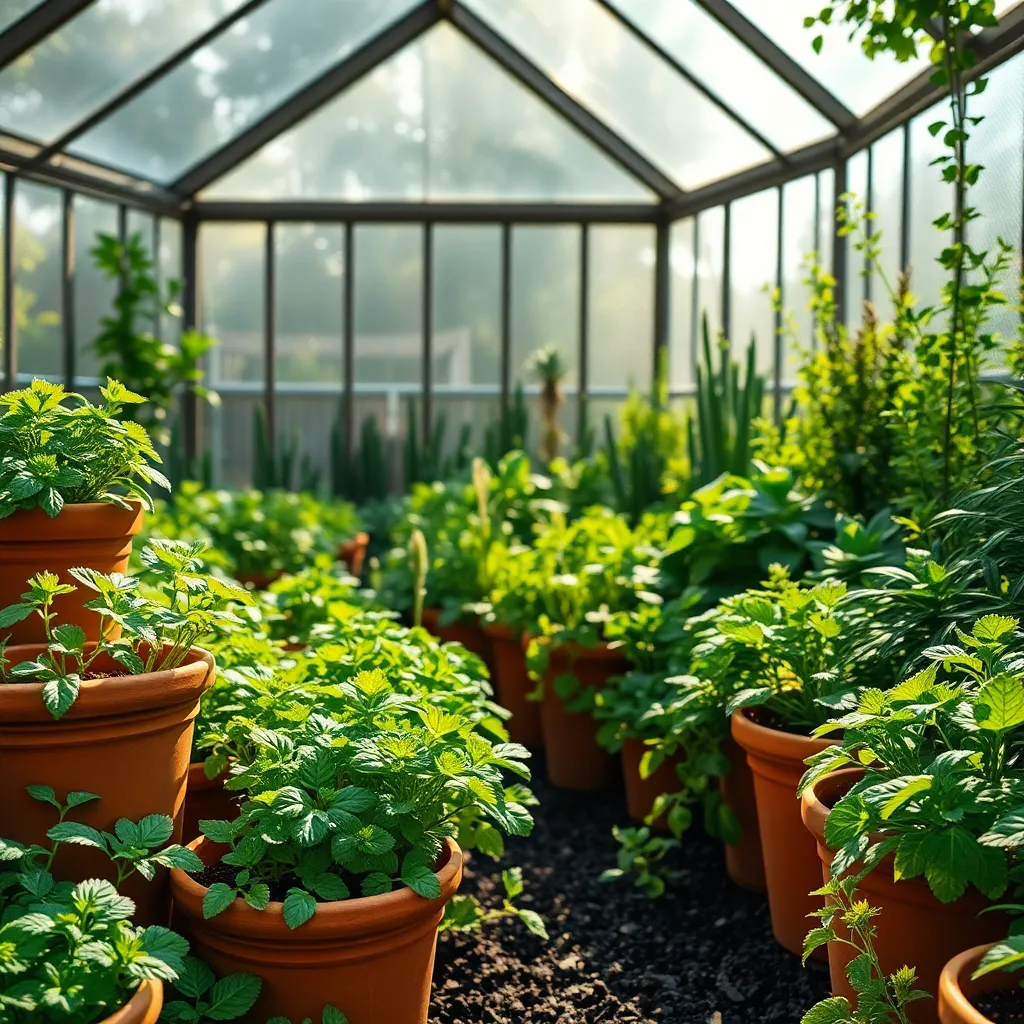
Conserving water in your greenhouse is not just eco-friendly but can significantly reduce your gardening costs. Begin by collecting rainwater using barrels positioned under your gutter system; this natural resource is perfect for your plants and helps reduce reliance on municipal water.
Incorporate mulch around your plants to help retain soil moisture and reduce the frequency of watering. Organic options like shredded leaves or wood chips can not only conserve water but also enhance soil fertility over time.
Consider installing a drip irrigation system, which delivers water directly to plant roots with minimal evaporation. This method is especially beneficial for larger greenhouses, where maintaining consistent moisture levels is crucial for plant health.
For a more advanced technique, employ a moisture meter to accurately gauge when your plants need watering, preventing over-watering and conserving resources. These meters are affordable and provide precise readings, ensuring that each plant receives just the right amount of moisture.
Organic Soil Preparation Methods
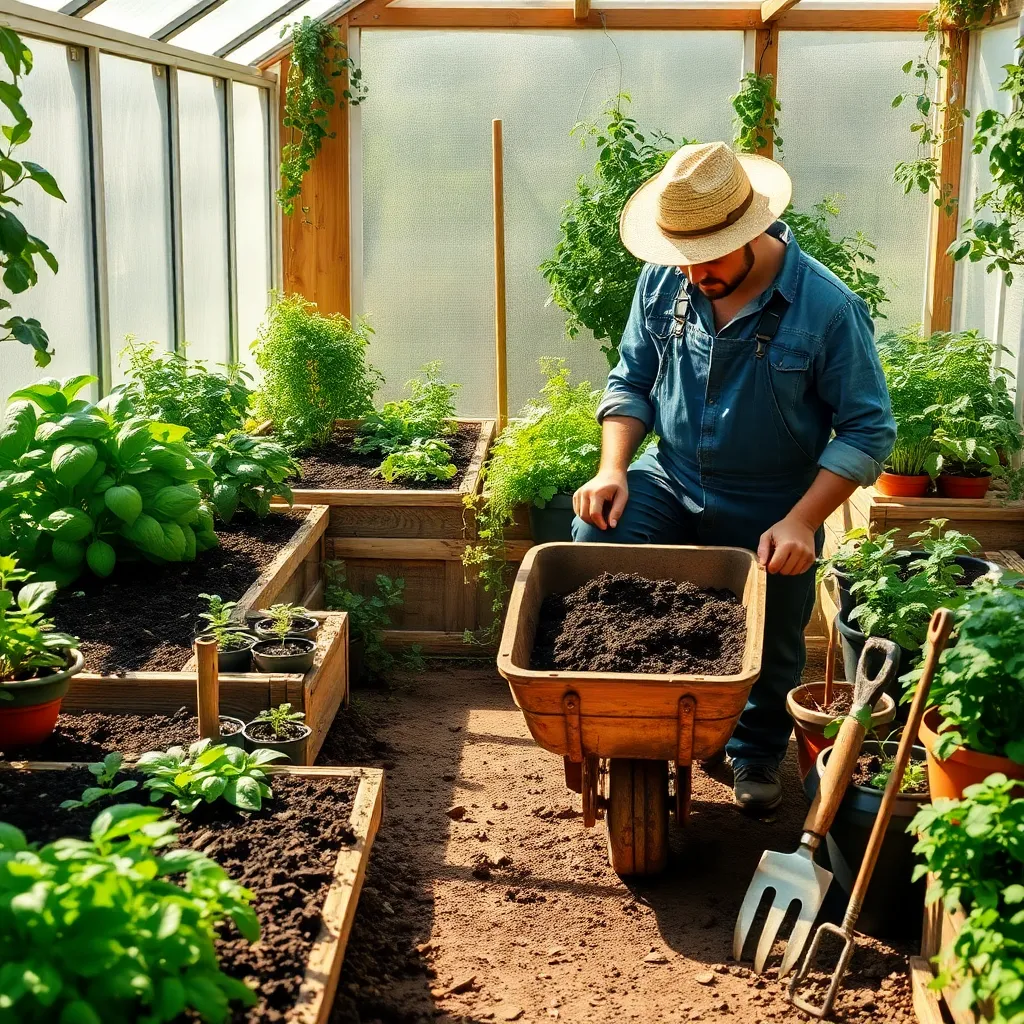
To prepare your greenhouse for growing, start with a focus on enriching your soil using organic methods. Begin by incorporating well-decomposed compost into your soil, which will improve its structure and provide essential nutrients for your plants.
In addition to compost, consider introducing organic matter such as aged manure or leaf mold, which can enhance soil fertility and water retention. Ensure that you work these materials into the top 6-8 inches of soil to maximize their effectiveness.
Testing your soil’s pH is another critical step in preparing your greenhouse for planting; most plants thrive in a slightly acidic to neutral pH of 6.0 to 7.0. Use a home testing kit to check the pH and adjust it accordingly by adding lime to raise the pH or sulfur to lower it.
For advanced gardeners, incorporating cover crops during the off-season can significantly boost soil health. These crops, such as clover or rye, fix nitrogen in the soil and can be turned under to add organic matter when your planting season begins.
Companion Planting for Pest Control
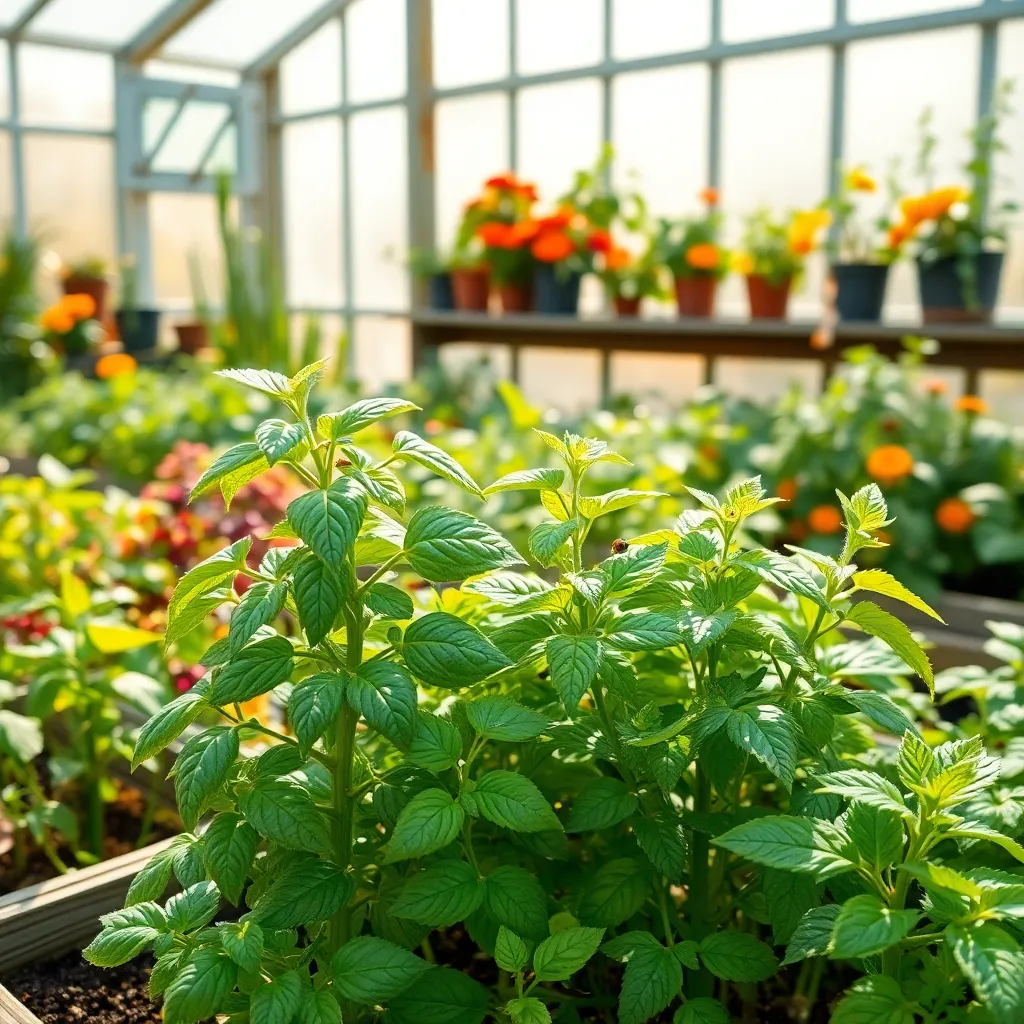
Companion planting is a strategic approach that uses the natural relationships between plants to manage pests organically. By placing certain plants together, you can create a more balanced ecosystem that naturally deters pests and supports plant health.
For instance, planting marigolds alongside tomatoes can help repel nematodes and other harmful insects. These bright flowers are not only beautiful but also emit a scent that many pests find unpleasant, making them an effective partner in your greenhouse.
Another effective duo is carrots and onions; the strong scent of onions can mask the smell of carrots, confusing carrot root flies. This pairing allows both plants to thrive while reducing the likelihood of pest infestations, making them an ideal choice for organic gardeners.
Additionally, consider growing nasturtiums with cucumbers to attract aphids away from vegetable crops. Nasturtiums act as a trap crop, luring aphids to them instead of your vegetables, thereby offering a natural pest control solution without the need for chemical interventions.
Implementing Crop Rotation Strategies
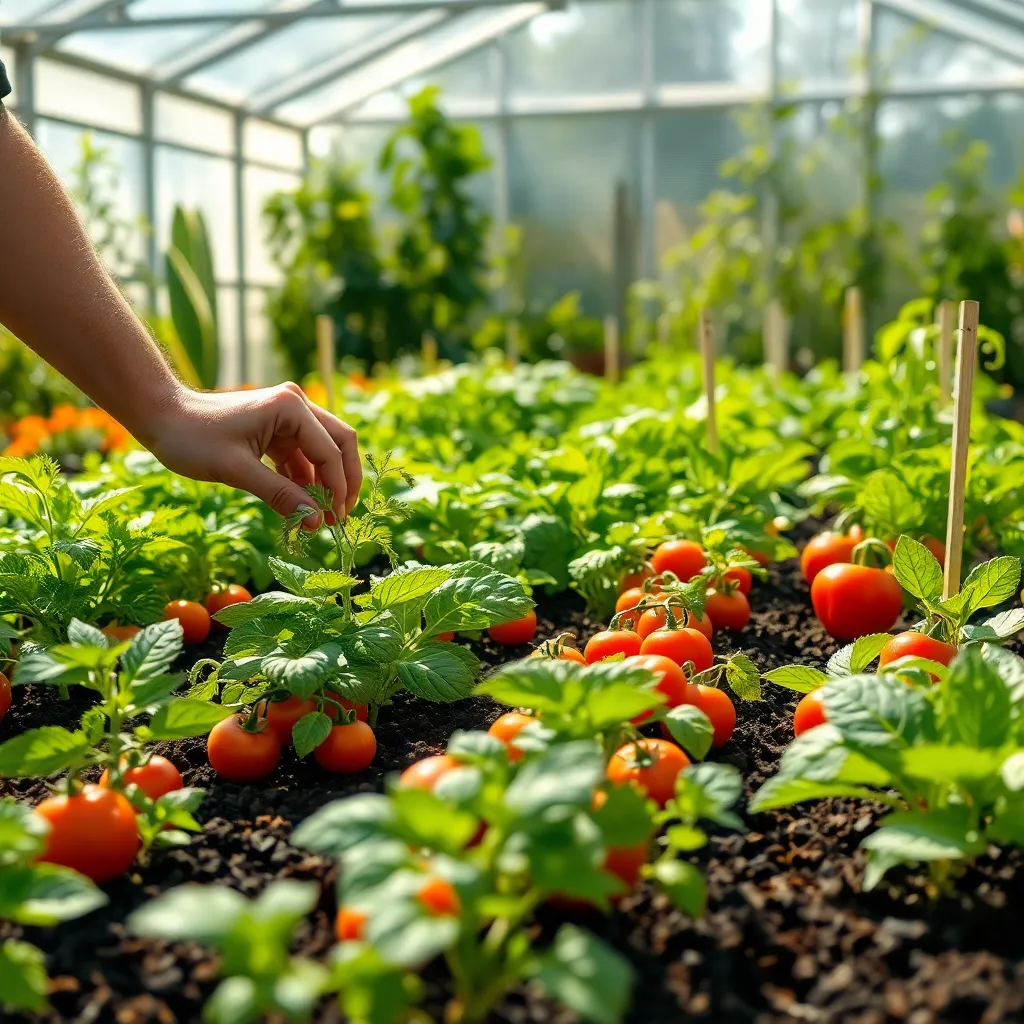
Implementing crop rotation strategies in your greenhouse can significantly enhance soil health and reduce pest infestations. By rotating crops, you prevent the buildup of soil-borne diseases and disrupt pest life cycles, promoting a more resilient growing environment.
Start by dividing your greenhouse into sections dedicated to different plant families such as legumes, brassicas, and nightshades. Each year, rotate these plant families to a new section, ensuring no family occupies the same space consecutively.
For beginners, a simple three-year rotation plan is effective, where legumes are followed by brassicas, then nightshades. This sequence not only enriches the soil with nitrogen from legumes but also prepares it for the nutrient demands of heavy feeders like tomatoes.
Advanced gardeners can implement a four-year rotation by adding root crops or alliums to the cycle. This additional step helps break pest cycles even further and diversifies the nutrients returned to the soil.
To maximize the benefits of crop rotation, maintain a detailed planting map each season. Documenting your crop locations and changes over the years ensures you avoid repeating the same mistakes and optimizes your greenhouse’s productivity.
Building a DIY Compost System
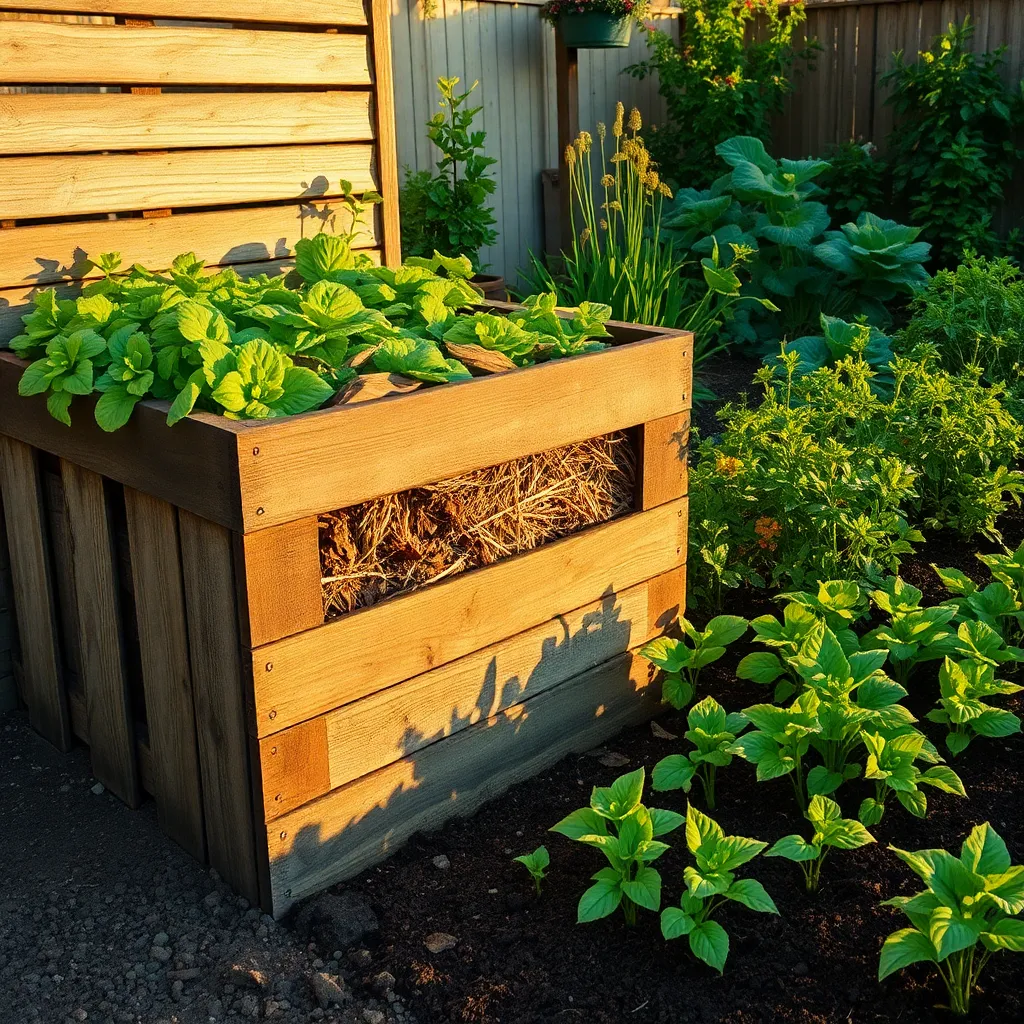
Building a DIY compost system is an excellent way to recycle kitchen scraps and garden waste into valuable nutrients for your plants. Start by selecting a suitable spot in your garden that is easily accessible and receives partial shade to maintain optimal temperature levels.
To construct your compost bin, consider using materials like wooden pallets, chicken wire, or repurposed plastic containers as they are economical and effective. Ensure the bin is at least one cubic meter in size to allow for enough heat and airflow, which are crucial for efficient decomposition.
Layering is key to successful composting, so alternate between green materials like vegetable scraps and grass clippings, and brown materials such as dried leaves and small branches. This balance helps maintain the carbon-to-nitrogen ratio, essential for the microbial activity that breaks down the compost.
Turn the compost pile every two weeks with a garden fork to aerate it and speed up the decomposition process. Keep the compost moist but not soggy, resembling a damp sponge, to promote the activity of beneficial organisms.
Integrating Vertical Gardening Methods
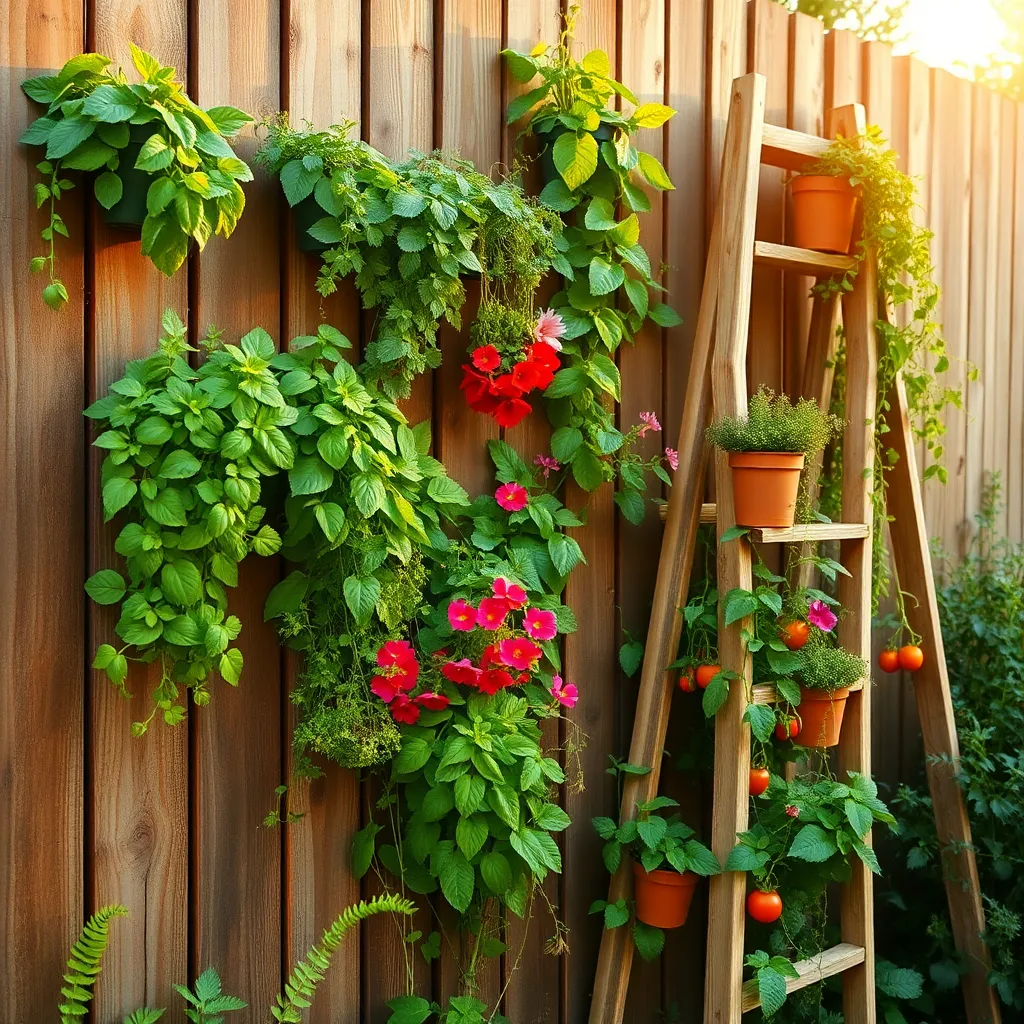
Vertical gardening is an efficient way to maximize your greenhouse space while adding a lush, green aesthetic. Start by choosing suitable plants like herbs, strawberries, or climbing beans, which thrive in vertical setups.
Next, consider the structure for your vertical garden, such as trellises, wall planters, or hanging pots. Ensure the chosen structure is sturdy enough to support the plants and allows adequate sunlight penetration.
When planting vertically, use high-quality, organic potting mix that retains moisture but drains well, such as a mix with perlite or vermiculite. Remember to water regularly, as vertical gardens tend to dry out faster than traditional beds.
For advanced gardeners, try incorporating a self-watering system to maintain optimal moisture levels. This can be achieved with drip irrigation or capillary mats which can be time-saving and improve plant health.
Selecting Organic Seeds and Plants
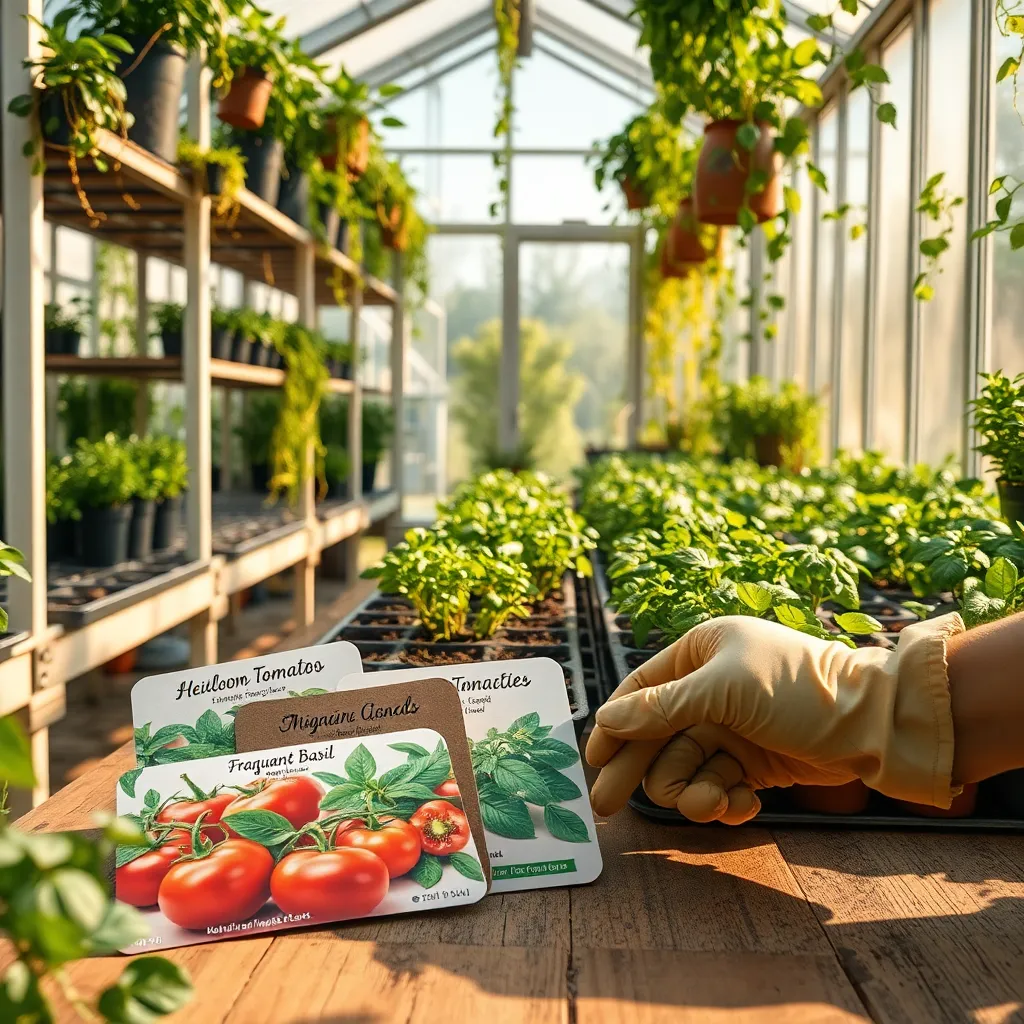
Choosing the right seeds and plants is crucial for a thriving organic greenhouse. Start by selecting certified organic seeds to ensure your plants are free from chemical treatments and genetically modified organisms.
Look for seeds labeled as heirloom or open-pollinated, which are excellent choices for organic gardening. These types of seeds not only support biodiversity but also allow you to save seeds for future planting seasons.
When selecting plants, opt for those known to thrive in greenhouse conditions, such as tomatoes, peppers, and herbs. These plants typically require consistent temperatures and humidity, making them ideal candidates for greenhouse environments.
Ensure that the soil you use is rich in organic matter and well-draining, which is vital for plant health in a greenhouse setting. Incorporating compost or aged manure into your soil mix can significantly enhance the nutrient content and water retention abilities.
Seasonal Planting and Harvesting Tips
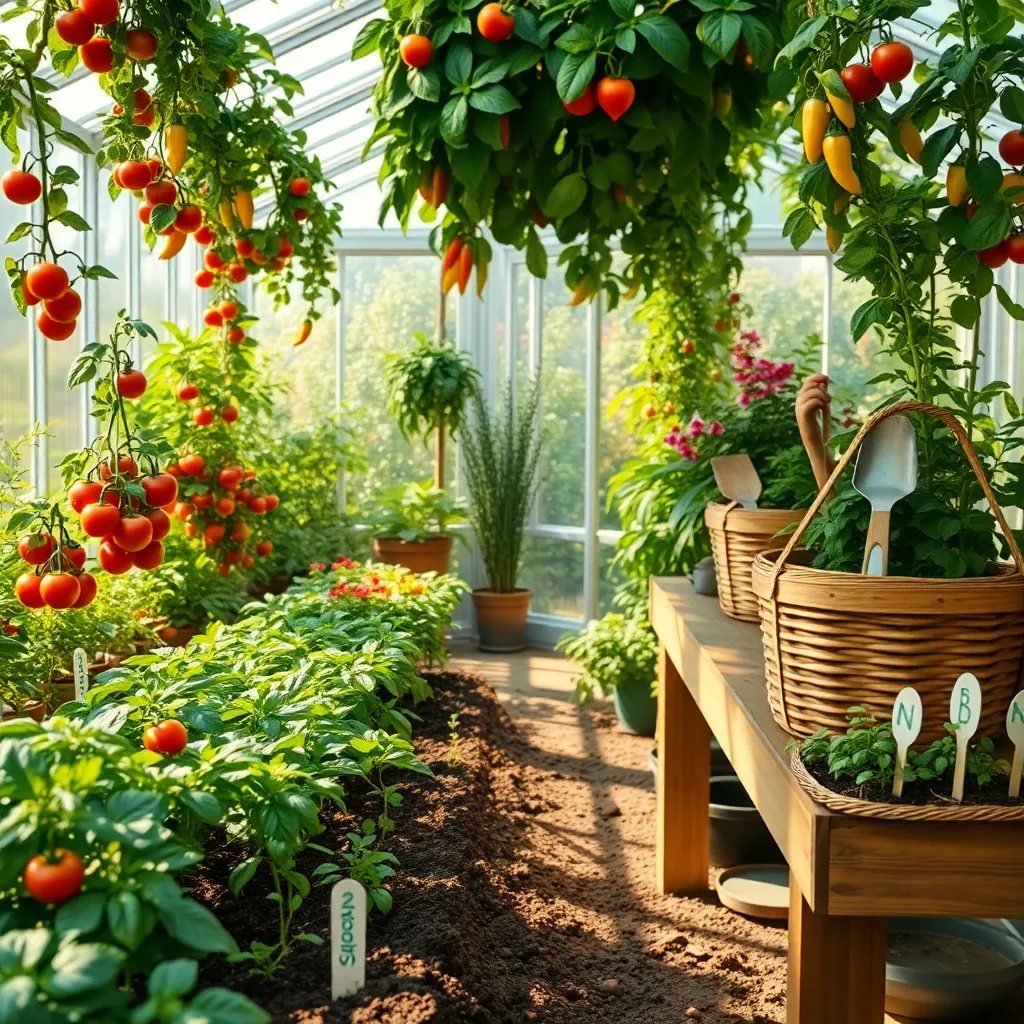
Understanding the timing of planting and harvesting is crucial for a successful organic backyard greenhouse. Plan your planting schedule based on the specific needs of each plant, considering factors such as temperature, light, and humidity.
In cooler climates, starting your seeds indoors can give them a head start. Use seed trays with a good quality organic potting mix to ensure healthy seedling development before transferring them to your greenhouse.
For warm-season crops like tomatoes and peppers, it’s essential to maintain consistent temperatures. Invest in a reliable thermometer and consider using heating mats to keep the soil warm during early spring planting.
Once your plants are established, regular monitoring is key to timely harvesting. Check vegetables like cucumbers and zucchinis daily, as they can quickly become overripe if left on the vine too long.
Advanced gardeners might experiment with succession planting to maximize greenhouse productivity. By staggering your plantings, you can ensure a continuous harvest throughout the growing season, keeping your kitchen stocked with fresh produce.
Don’t forget to adjust your watering schedule as the seasons change. During cooler months, reduce watering frequency to prevent root rot, while increasing it during the warmer months to keep plants hydrated.
Maintaining a Healthy Greenhouse Ecosystem
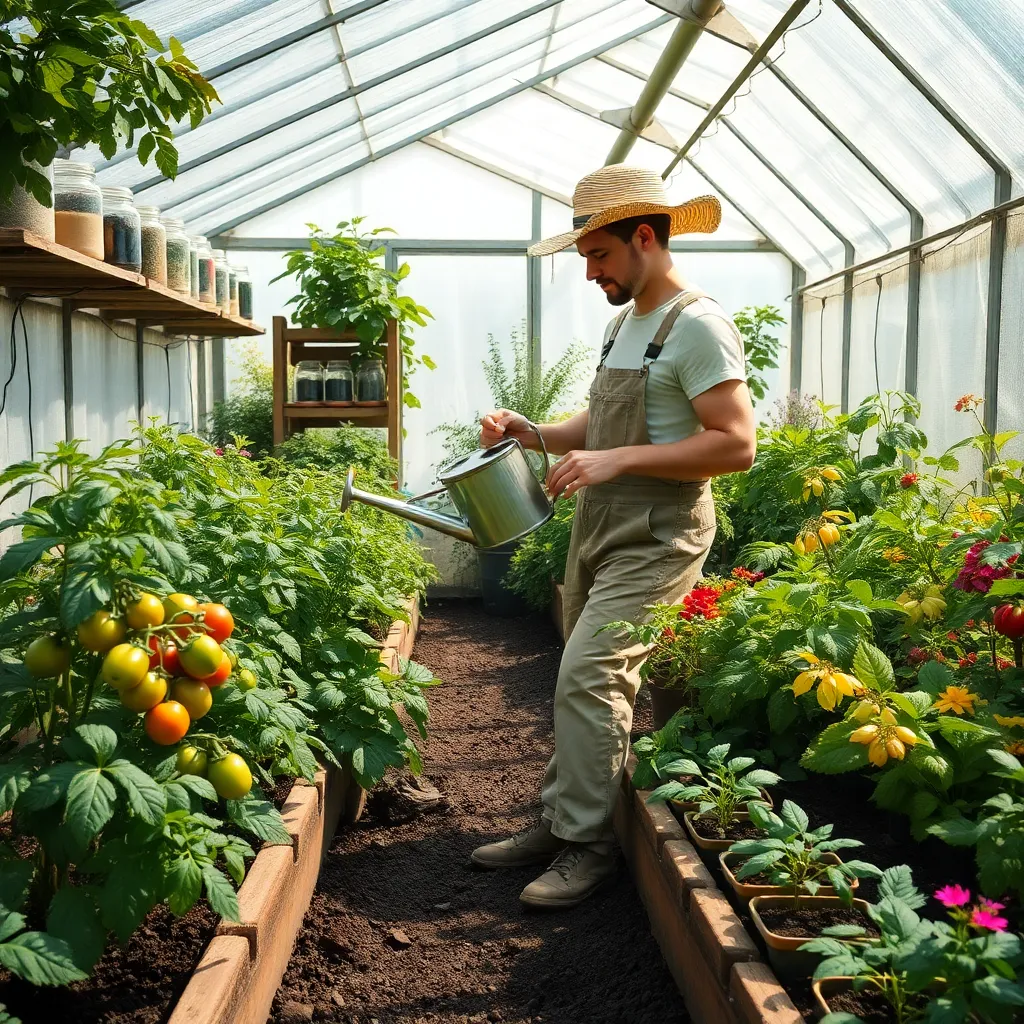
Creating a thriving greenhouse ecosystem begins with maintaining the right temperature and humidity levels. Aim to keep temperatures between 65-75°F and humidity around 50-70% for most plants to ensure optimal growth.
Incorporating a diverse range of plants can significantly benefit the greenhouse environment. This diversity helps in pest management and promotes a balanced ecosystem, reducing the reliance on chemical treatments.
Regularly monitor soil health by checking for proper drainage and nutrient levels. Use organic compost to enrich the soil, ensuring plants receive the necessary nutrients for robust growth.
Advanced gardeners might consider implementing an integrated pest management (IPM) approach. This involves using beneficial insects such as ladybugs and predatory mites to naturally control pest populations.
Watering practices are crucial in maintaining a healthy greenhouse ecosystem. Use a drip irrigation system to provide consistent moisture while minimizing water wastage.
Ventilation is key to preventing mold and mildew, especially in high humidity environments. Regularly open vents or install fans to circulate air, maintaining a fresh and healthy environment for your plants.
Conclusion: Growing Success with These Plants
In exploring the ’14 Organic Backyard Greenhouse Projects,’ we’ve unearthed the essence of nurturing relationships through shared goals, patience, and continuous growth. From cultivating communication and fostering mutual respect to tending to conflicts with care and celebrating each other’s unique qualities, these projects serve as a metaphor for relationship flourishing. By embracing shared activities and setting aside time for mutual interests, relationships can endure and thrive, much like a well-maintained greenhouse.
As your next step, consider choosing one of these concepts to implement this week. Perhaps start by setting aside dedicated time to engage in an activity that strengthens your bond, such as planning a small gardening project together. This simple action can plant the seeds for deeper connection and understanding.
Don’t forget to bookmark this article as your personal guide to relationship enrichment. Revisit these concepts whenever you need inspiration or a reminder of the foundational elements that sustain lasting partnerships.
Remember, like any flourishing garden, relationships require ongoing attention and dedication. With every effort, you are nurturing a partnership that has the potential to blossom beautifully over time. Embrace this journey and watch your relationship thrive in new and unexpected ways.

